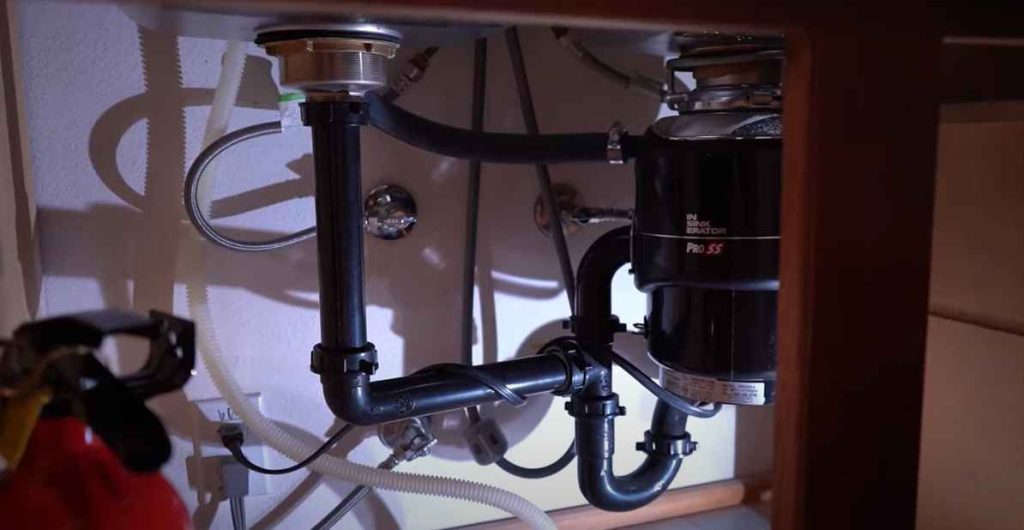To clean a P trap in a sink, first, place a bucket underneath it to catch water. Then, unscrew the trap’s connectors by hand or with a wrench and flush the trap with water to remove debris.
A clogged P trap is a common household nuisance, disrupting the smooth functioning of your sink. Regular maintenance of the P trap, the curved pipe beneath the sink, is essential to ensure water flows freely and unpleasant odors are kept at bay.
Debris such as hair, soap scum, and food particles tend to accumulate over time, leading to problematic blockages. Most P traps are easily accessible and don’t require specialized skills for a thorough cleaning. Let’s explain in this content about “How to Clean P Trap in Sink?”
By letting gravity assist in your endeavor, placing a bucket to collect any spillage is a logical first step. Minimal tools are typically needed, so even novices can tackle this simple yet vital plumbing maintenance task to keep sinks in top condition.
Introduction To P traps
Meet the P trap, your sink’s unseen hero. This curved pipe beneath your sink plays a vital role. It stops bad odors and sewer gases from entering your home. Plus, it’s essential for preventing clogs deep within your plumbing system.
Importance Of P traps
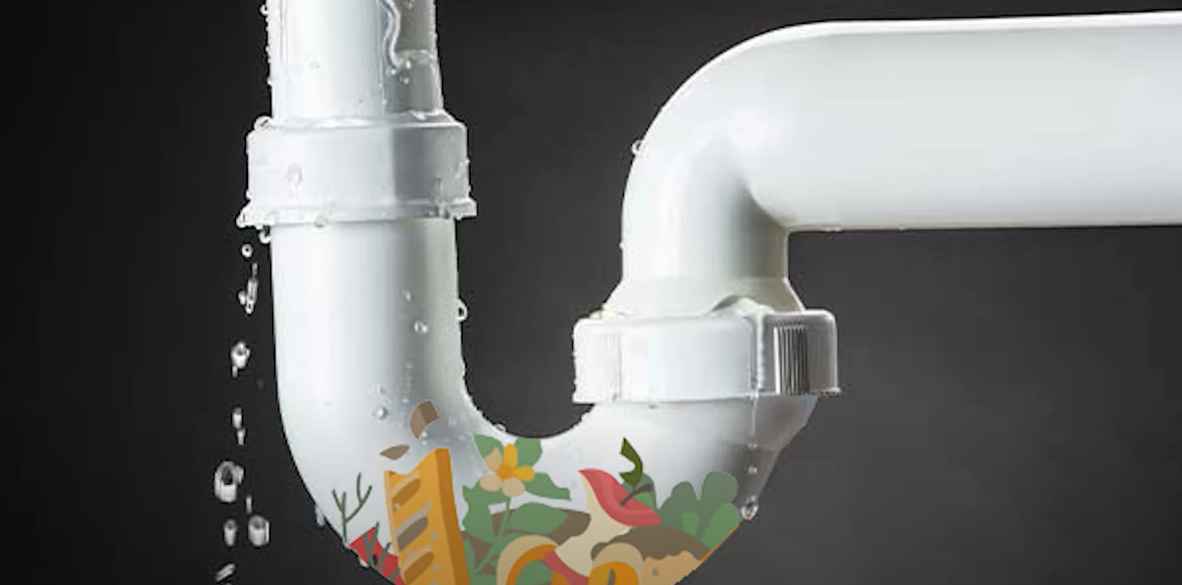
A P trap is not just another part of your plumbing. It’s vital for several reasons:
- Hygiene: It acts as a barrier, stopping sewer gases from rising up.
- Safety: It collects debris, reducing the risk of deep clogs.
- Water seal: The water lodged in the P trap’s curve maintains a seal.
Identifying The P trap Under Your Sink
Locating the P trap is straightforward. Look under any sink in your home. Here’s what to identify:
- The P trap is the U-shaped bend in the pipe.
- It connects to two other sections: the tailpiece and the drain extension.
- The P trap should have union nuts securing it in place.
Spot the nuts at either end of the curve. These nuts make removal and cleaning possible without special tools.
Signs Of A Clogged P trap
Your kitchen or bathroom sink should drain freely, letting water flow swiftly. A clog in the P trap, the curved pipe underneath your sink, disrupts this flow. Recognizing the signs of a clogged P trap early on can prevent bigger plumbing disasters.
Common Symptoms Of Clogs
- Slow drainage: Water pools and drains slowly.
- Gurgling sounds: Unusual noises come from your drain.
- Unpleasant odors: Foul smells rise from the sink.
- Water backup: Dirty water returns after you think it’s gone.
When To Clean Your P-trap
Cleaning your P-trap should happen when you notice any of the above symptoms. Regular maintenance every few months is also a good practice. Keep an eye on your sink’s performance after heavy use or if it hasn’t been used for a while.
Safety First: Preparing To Clean The P trap
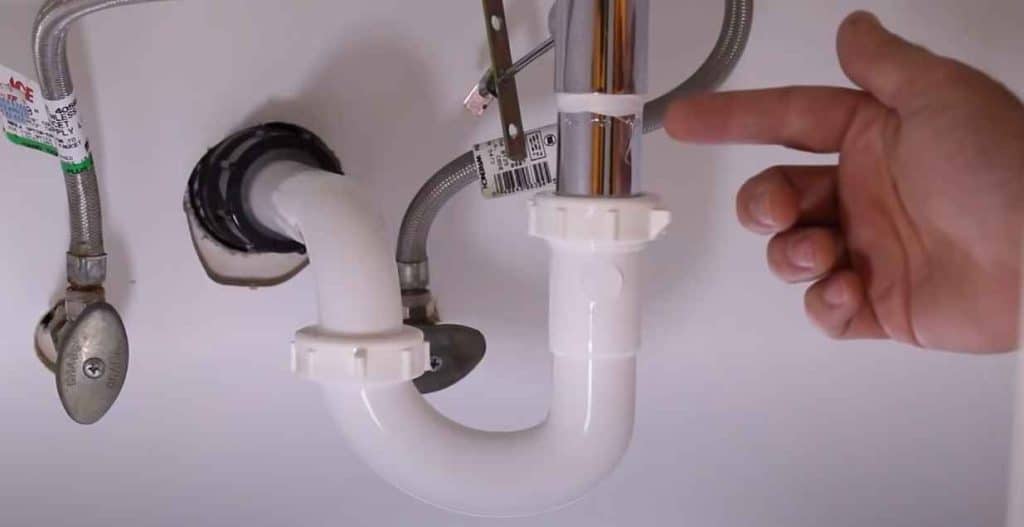
Cleaning your sink’s P trap is a straightforward task but requires safety measures. A sink’s P-trap is the curved pipe under the sink that traps debris and prevents clogs. Before starting, creating a safe work environment is crucial. Follow these guidelines to prepare your area and protect yourself.
Tools And Materials You’ll Need
Gathering the right tools and materials before starting ensures a smooth process.
- Bucket – To catch water from the drain.
- Adjustable wrench – For loosening the P-trap connections.
- Channel-lock pliers – In case the trap is tight.
- Rags or towels – To clean up spills and debris.
- Brush or bottle cleaner – To scrub the inside of the P-trap.
- Replacement washers – If the old ones are worn out.
Protective Equipment For The Job
Safety is a top priority when cleaning a P-trap.
- Gloves: Protect hands from sharp edges and debris.
- Goggles: Shield eyes from splashes or droplets.
- Mask: Prevent inhalation of harmful particles.
Once tools and protective gear are ready, place the bucket under the P-trap. This prepares for any water spillage. Clear the area, and ensure good lighting to see what you are doing. Now, you’re set to clean the P trap safely.
Step-by-step Guide To Cleaning A P trap

A clogged sink often indicates a blocked P trap. This guide will show you how to clean your P trap, restoring your sink’s flow.
Removing The P trap
Turn off the water to prevent any flow while working. Place a bucket underneath the sink to catch drips.
Locate the P trap. It’s the curved pipe underneath your sink. Loosen the slip nuts by hand or with pliers. Carefully remove the P-trap and empty its contents into the bucket.
Cleaning And Inspection Process
Rinse the P-trap with warm water to remove debris. Use a small brush or old toothbrush to scrub inside. Check for damage or wear. If damaged, replace it.
Examine the sink tailpiece and waste pipe for clogs or buildup. Clean them as needed to ensure smooth water flow.
Reinstalling The P trap
Slide the P-trap back into place. Tighten the slip nuts by hand to secure it. Do not over-tighten, as this may crack the pipes. Turn on the water and check for leaks. Tighten further if needed.
Troubleshooting Common P trap Issues
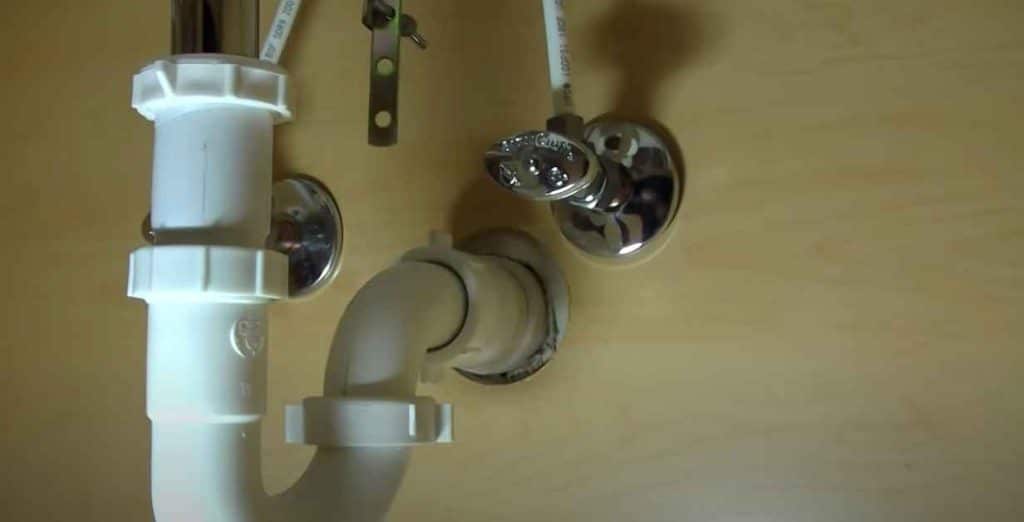
Troubleshooting Common P Trap Issues can turn a messy situation into a quick fix. This segment dives into common problems and offers step-by-step solutions for a clog-free, leak-proof sink.
Dealing With Stubborn Clogs
When a P-trap clogs, water flow halts. Here’s how to tackle those tough blockages:
- Empty the Sink: Clear out any standing water. It makes the process easier and cleaner.
- Prepare a Bucket: Place it under the P-trap. It will catch any spillage.
- Loosen the Nuts: Use a wrench to gently release the P trap connectors.
Once removed, check inside the P-trap. A flashlight helps spot the clog. If it’s within reach, use gloves to remove it. If not, a plumber’s snake or a straightened clothes hanger can dislodge debris. Rinse the trap with water before reattaching.
Addressing Leaks After Reinstallation
After cleaning, a P trap might leak when put back. Follow these steps to ensure a watertight seal:
- Examine the Washers: They must sit flat and be free of damage.
- Check the Threads: Ensure they align correctly for a snug fit.
- Hand Tighten: Always start with hand tightening for the best control.
If leaks persist, apply plumber’s tape around the threads. Tighten the nuts with a wrench, but don’t overdo it. If problems continue, the P trap might need replacing.
Preventative Measures To Maintain Clear P traps
Keeping your sink’s P trap clear is vital. Think of the P-trap as a sink’s safety net, catching debris and preventing deep clogs. Neglect it, and you might face a blockade calling for more than just a plunger. Dive into these measures to ensure a smooth flow.
Regular Cleaning Schedule
Set a routine for P-trap maintenance. This way, you stop clogs before they grow. Experts advise cleaning your P-trap every three months. Yet, high-use sinks might need monthly checks. Follow these steps:
- Place a bucket under the P-trap.
- Unscrew the P-trap.
- Remove debris.
- Rinse with water.
- Re-attach the P-trap.
Avoiding Clogs: Best Practices
Prevent clogs and protect your P-trap with these simple habits:
- Use strainers in your sink to catch solids.
- Avoid pouring grease down the drain. It solidifies and causes blockages.
- Run hot water after each use to flush away residue.
- Dispose of coffee grounds and food scraps in the trash, not the sink.
By following these steps, you keep your sink P-trap free from unwelcome surprises.
The Role Of Professional Plumbers
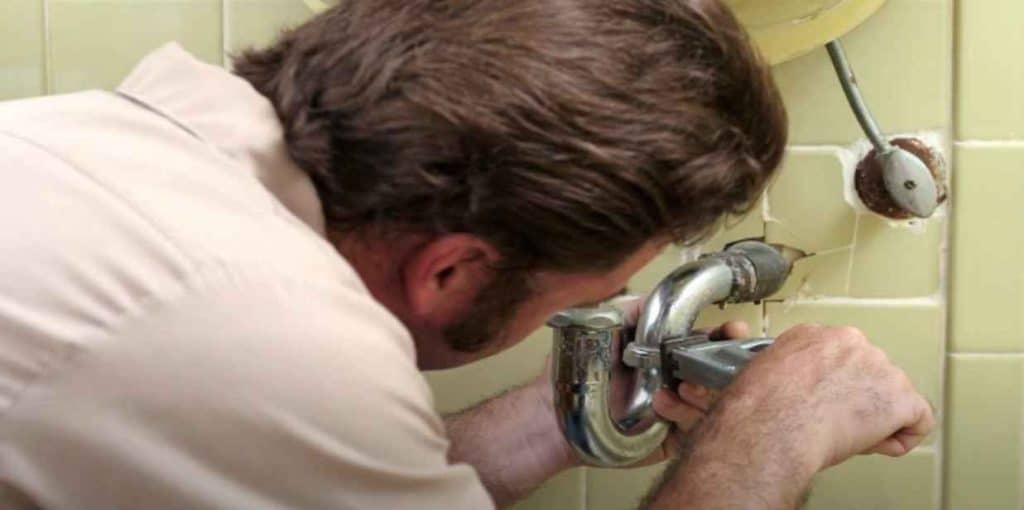
Plumbing systems are complex. They keep your home running smoothly. When your sink clogs, it’s often a P-trap issue. That’s the curved pipe under your sink. Professional plumbers can help. They have skills and tools for the job. DIY tricks can fall short and cause more problems. Trust experts for a clean and proper fix.
When To Call A Professional
Sink not draining? Water pooling? Nasty smell coming up? These signs shout for a plumber. Don’t wait until your kitchen or bathroom floods. A pro can save you from a messy disaster and costly damage. Think smart, act quickly, and call for help.
Benefits Of Professional P trap Maintenance
Why go pro? Read on to understand the benefits:
- Expertise: Plumbers know all about P-traps. They’ll spot and fix all potential issues.
- Tools: They use specialized tools. These tools clean without harming your pipes.
- Longevity: Regular maintenance by pros can make your plumbing last longer.
- Safety: Handling plumbing repair can be risky. Professionals do it safely and effectively.
- Guarantee: Work done by experts often comes with assurance. If issues persist, they’ll fix it.
P trap Regulations And Codes
Clean sinks prevent clogs and smell issues. A key component is the P-trap, a critical plumbing fixture. It requires regular maintenance and compliance with specific regulations and codes. Knowledge of these requirements ensures a functional and legal plumbing system.
Legal Requirements For P traps
Building codes dictate P-trap standards. These laws ensure P-traps are properly installed and functioning to prevent sewer gases from entering homes. Contractors and homeowners must follow them during installation and maintenance.
| Regulation Area | Common Standard |
|---|---|
| Material | Non-corrosive, durable |
| Size | Match to the draining pipe |
| Location | Below the fixture |
| Accessibility | For cleaning, visible |
- Codes vary by location
- Consult local guidelines
- Check with plumbing officials
Ensuring Compliance During Repairs And Installations
Comply with local codes during P-trap installations and repairs. This will avoid penalties and ensure safety. Use licensed professionals or follow detailed guidelines when DIY.
- Understand the local code requirements
- Use the right tools and materials
- Seek professional help if necessary
Remember, keeping a P-trap clean is not just about function; it’s about staying within the law.
Advanced Tips And Hacks For P-trap Cleaning
Discover expert techniques for cleaning the P-trap under your sink to ensure free-flowing drains. Mastering the simplicity of P-trap maintenance can prevent clogs and odors, keeping your sink functioning smoothly.
Keeping a sink’s P-trap clean ensures smooth drainage and prevents odors. This section covers advanced tips for maintaining a spotless P-trap with ease. Master these tricks for a clean, fresh sink with no professional help needed.
Natural Cleaning Solutions
Banish harsh chemicals and natural solutions. They’re safe, effective, and eco-friendly.
- Mix baking soda and vinegar for a fizzy clean. Pour half a cup of each down the drain, wait 15 minutes, then flush with hot water.
- Try lemon juice for a fresh scent. The acid breaks down grime.
- Salt and hot water can also dislodge grease. Pour it down and let it work overnight.
Innovative Tools for Easier Maintenance
Innovative Tools For Easier Maintenance
Reduce the need for elbow grease with clever tools. They simplify maintenance and safeguard your plumbing.
- A zip-it tool swiftly clears hair and debris.
- Drain snakes reach deeper than standard tools. They remove stubborn clogs with minimal effort.
- Consider a magnetic P-trap disassembly tool to avoid spills and mess.
The Benefits Of A Well-maintained P-trap
Cleaning your sink’s P-trap does more than just prevent clogs. It ensures that your plumbing system stays in top condition, avoiding leaks and maintaining a proper hygienic environment in your home.
Understanding the benefits of a well-maintained P trap is crucial for any homeowner. Let’s delve into the advantages and some vital takeaways from correctly cleaning your P-trap.
Summary Of Key Points
- Prevents odors: A clean P trap blocks sewer gases from entering.
- Avoids clogs: Regular cleaning removes debris, keeping water flowing.
- Saves money: Less risk of expensive plumbing issues.
Final Thoughts On Sink P-trap Maintenance
Maintaining your P trap is not complex. Simple steps can prevent bigger problems. Always ensure the P-trap is correctly reassembled to avoid leaks. Remember to clean it regularly and enjoy the peace of mind that comes with a smoothly functioning sink.
Frequently Asked Questions For How To Clean P Trap In Sink
What Is A P Trap In Your Sink?
A P Trap is a curved pipe underneath your sink. It retains a small amount of water to prevent sewer gases from entering your home. The shape is essential for its function and forms a seal against odors.
Why Do You Need To Clean A P Trap?
Cleaning a P Trap helps prevent clogs and odors by removing debris. Regular maintenance ensures proper drainage and extends the lifespan of your sink’s plumbing.
How Often Should A P Trap Be Cleaned?
A P Trap should be cleaned at least once a year. If you notice slow drainage or bad smells, clean it more frequently. Routine checks can prevent major blockages.
Can Cleaning A P Trap Improve Drainage?
Yes, cleaning a P Trap can significantly improve drainage. Removing accumulated debris and buildup allows water to flow smoothly, preventing backups and potential plumbing issues.
Conclusion
Cleaning your sink’s P-trap is simpler than it sounds, and doing it regularly can prevent unpleasant odors and blockages. With the right tools and a clear guide, maintaining a free-flowing sink is within anyone’s grasp. Remember, a clean P-trap means fewer plumbing headaches and a happier home environment.
So roll up your sleeves, it’s time to keep that sink in top condition!

